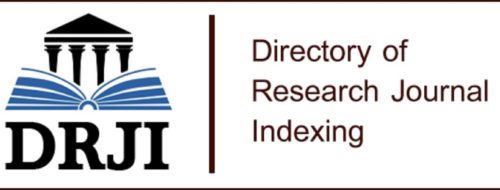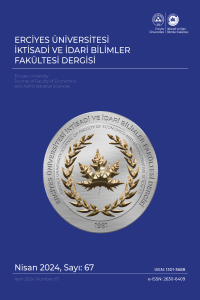Öz
This study aims to reveal the total factor productivity levels in the agricultural sector in 81 provinces of Turkey by using the Malmquist index method over the period 2009-2019. The results extracted from the Malmquist index findings show that index value changed between 1.186 and 0.952, agricultural productivity increased in 75 provinces and decreased in 6 provinces. In addition, our findings confirm technological change affects the change in agricultural productivity levels in all provinces in Turkey, and that technology is a determining factor in agricultural productivity in all provinces. From a policy perspective, the results suggest that authorities in Turkey should develop and implement technologies that will make the sector productive, to encourage and support infrastructure, research and publication studies on technology. In addition, this research claims that the regional incentive system can be revised and, it can build an incentive system based on performance and efficiency in which provinces or businesses operating in this field are classified according to their productivity.
Anahtar Kelimeler
Total Factor Productivity (TFP) Agricultural Sector Malmquist TFP Index Turkey.
Destekleyen Kurum
-
Proje Numarası
-
Teşekkür
This study is derived from the first author's doctoral thesis titled “A Review on the Development of Innovation and Productivity in the Agricultural Sector at the Provincial Level in Turkey”.
Kaynakça
- Allafi, K. A. M. (2014). The Impact of Changing Agricultural Policies on Libyan Agricultural Performance. Sheffield Hallam University, Doctoral Dissertation, Sheffield.
- Armagan, G. and Ozden, A. (2007). Determinations of Total Factor Productivity with Cobb-Douglas Production Function in Agriculture: The Case of Aydin-Turkey. Journal of Applied Sciences, 7: 499-502.
- Arnade, C. (1998). Using a Programming Approach to Measure International Agricultural Efficiency and Productivity. Journal of Agricultural Economics, 49: 67-84.
- Avcı, M. A. and Kaya, A. A. (2008). Geçiş Ekonomileri ve Türk Tarım Sektöründe Etkinlik ve Toplam Faktör Verimliliği Analizi (1992-2004) (The Analysis of Efficiency and Total Factor Productivity in Agriculture Sectors of Turkey and Transition Economies (1992-2004)). Ege Academic Review, 8: 843-860.
- Ball, V. E., Butault, J-P. and Nehring, R. F. (2002). US Agriculture, 1960-96: A Multilateral Comparison of Total Factor Productivity, In Agricultural Productivity, 11-35, Springer, Boston, MA.
- Bilişik, M. T. (2015). Gelişmekte Olan ve Hızlı Büyüyen Ülkelerin Tarım Sektörünün Malmquist Toplam Faktör Verimliliği ile Analizi (Analyzing Agriculture Sector of Developing and Growth-Leading Countries Using Malmquist Total Factor Productivity). Trakya University Journal of Social Science, 17, 77-97.
- Çelik, N. (2000). Tarımda Girdi Kullanımı ve Verimliliğe Etkileri (Input Use in Agriculture and Its Effects on Productivity). Economic Sectors and Coordination General Directorate, Department of Agriculture, Specialization Thesis, Ankara.
- Coelli, T. J. (1996). Measurement of Total Factor Productivity Growth and Biases in Technological Change in Western Australian Agriculture. Journal of Applied Econometrics, 11: 77-91.
- Coelli, T. J. and Rao, D. S. P. (2005). Total Factor Productivity Growth in Agriculture: A Malmquist Index Analysis of 93 Countries, 1980-2000. Agricultural Economics, 32: 115-134.
- Dharmasiri, L. M. (2012). Measuring Agricultural Productivity Using the Average Productivity Index (API). Sri Lanka Journal of Advanced Social Studies, 1: 25-44.
- Eastern Anatolia Development Agency (2019). Şehir Şehir Türkiye (City by City Turkey). Ankara: Ozyurt Printing.
- FAO (2010). Agricultural Investment Funds for Developing Countries. http://www.ea-stagri.org/docs/group/264/investment_funds.pdf (A.D. 16.04.2021).
- FAO (2017). Productivity and Efficiency Measurement in Agriculture: Literature Review and Gaps Analysis, (Publication Prepared in the Framework of the Global Strategy to Improve Agricultural and Rural Statistics). Rome: Food and Agriculture Organization of the United Nations.
- FAOSTAT (2022). https://www.fao.org/faostat/en/#data (A.D. 27.02.2022).
- Färe, R., Grosskopf, S., Norris, M. and Zhang, Z. (1994). Productivity Growth, Technical Progress, and Efficiency Change in Industrialized Countries. The American Economic Review, 84: 66- 83.
- Giang, M. H., Xuan T. D., Trung, B. H. and Que, M. T. (2019). Total Factor Productivity of Agricultural Firms in Vietnam and its Relevant Determinants. Economies, 7: 4.
- Guvercin, D. (2018). Scale and Elasticity Properties of Turkish Agricultural Production: Political Economy Approach. Sosyoekonomi, 26: 103-116.
- Hayami, Y. and Ruttan, V. W. (1970). Agricultural Productivity Differences among Countries. The American Economic Review, 60: 895- 911.
- Karaman, S. (2008). Türkiye Ekonomisinin Gelişmesinde Tarımın Rolü: Eşbütünleşme Analizi (Role of Agriculture in Economic Development of Turkey: Cointegration Analysis). Doctoral dissertation, Bursa Uludag University, Bursa.
- Karaman, S. and Özalp, A. (2017). Türkiye Tarım Sektörü Bölgesel Toplam Faktör Verimliliğinin Malmquist Endeks ile Belirlenmesi (Regional Agriculture Sector in Turkey: Total Factor Productivity Determination by Malmquist Index). Journal of Agricultural Faculty of Gaziosmanpaşa University (JAFAG), 34: 209-217.
- Kaya, P. and Aktan, H. E. (2011). Türk Tarım Sektörü Verimliliğinin Parametrik Olmayan Bir Yöntemle Analizi (A Non-Parametric Analysis of Turkish Agricultural Productivity). Journal of Alanya Faculty of Business, 3.
- Koç, A. A., Bayaner, A., Uysal, P. and Subaşı, S. (2016). Türkiye Tarım Sektöründe Faktör Talebi ve Toplam Faktör Verimliliği (Factor Demand and Total Factor Productivity in Turkish Agriculture). In XII. National Agricultural Economics Congress, p. 859-868, Isparta, 25-27 May 2016.
- Latruffe, L. (2010). Competitiveness, Productivity and Efficiency in The Agricultural and Agri-Food Sectors. OECD Food, Agriculture and Fisheries Papers, No. 30, Paris: OECD Publishing.
- Lee, D. (2017). Economics of Technological Change and Induced Innovation. Washington State University, Doctoral Dissertation, Washington.
- Link, A. N. and Siegel, D. S. (2003). Technological Change and Economic Performance. In Cantwell, J., Mowery, D. (Eds.), Studies in Global Competition, London and New York: Routledge, Taylor & Francis Group.
- Lipsey, R. G. and Carlaw, K. I. (2004). Total Factor Productivity and The Measurement of Technological Change. The Canadian Journal of Economics/Revue Canadienne d'Economique, 37: 1118-1150.
- Lissitsa A. and Odening M. (2005). Efficiency and Total Factor Productivity in Ukrainian Agriculture in Transition. Agricultural Economics 32: 311-325.
- Liu, Y. (2007). Risk, Induced Innovation, and Productivity Convergence in US Agriculture. Washington State University, PhD Thesis, Washington.
- Mollavelioğlu, M. S., Kanberoğlu, Z. and Oğuz, A. (2017). Afro-Avrasya Ülkelerinde Tarımsal Toplam Faktör Verimliliği ve Ekonomik Büyüme (Agricultural Aggregate Factor Productivity and Economic Growth in The Afro-Eurasian Countries). Van Yüzüncü Yıl University Journal of Social Sciences Institute, 1.
- Özkan, M. (2018). Tarım İşletmelerinde Sürdürülebilirliğin Ölçülmesi: Aydın İli Örneği (Measurement of Sustainable Agriculture: The Case of Aydin Province). Aydin Adnan Menderes University, Master's Thesis, Aydin.
- Özok, U. (2006). Veri Zarflama Analizi ve Malmquist Toplam Faktör Verimliliği Endeksi ile Türkiye’deki İllerin Tarım Etkinliklerinin İncelenmesi (Using of Data Envelopment Analysis and Malmquist Total Factor Productivity Index in Investigating the Efficiency of Agriculture in Provinces of Turkey). Gazi University, Master's Thesis, Ankara.
- Presidency of the Republic of Turkey Presidency of Strategy and Budget (2022). Presidential Annual Program for 2022, Ankara.
- Ritchie H., Rosado, P. and Roser M. (2019). Meat and Dairy Production, 2017. https://ourworldin-data.org/meat-production (A.D. 06.07.2022).
- Rosegrant, M. W. and Evenson, R. E. (1992). Agricultural Productivity and Sources of Growth in South Asia. American Journal of Agricultural Economics, 74: 757-761.
- Şahin, M. Y. and Kaplan, H. (2021). Dönüşüm Sürecinde Yatırım Teşviklerinin Dünü ve Bugünü (The Past and Present of Investment Incentives in the Transformation Process). Ankara: The Union of Chambers and Commodity Exchanges of Türkiye (TOBB) publications.
- SEGE (2017). Socio-Economic Development Index 2017. Republic of Turkey Ministry of Industry and Technology, Publication of the General Directorate of Development Agencies, No. 3, Ankara.
- Takım, A. and Ersungur Ş. M. (2018). Türkiye’de Teşvik Sisteminin Yapısı, Sorunları ve Etkinliği Üzerine Bir Politika Önerisi: Tek Bir Uygulamacı Kuruluş Sorunları Çözer Mi? (A Policy Proposal on the Problems, Effectiveness and Structure of Incentive System in Turkey: Can Single Institution Solve Problems?). Atatürk University Journal of Economics and Administrative Sciences, 32: 725-744.
- Tipi, T. and Rehber, E. (2006). Measuring Technical Efficiency and Total Factor Productivity in Agriculture: The Case of the South Marmara Region of Turkey. New Zealand Journal of Agricultural Research, 49: 137-145.
- TUIK (2021a). Regional Statistics. https://biruni.tuik.gov.tr/bolgeselistatistik/sorgu-Sayfa.do?target=degisken# (A.D. 09.10.2021).
- TUIK (2021b). https://biruni.tuik.gov.tr/medas/?kn=144&locale=tr (A.D. 09.01.2021).
- TUIK (2021c). https://data.tuik.gov.tr/Kategori/GetKategori?p=Tarim-111 (A.D. 15.10.2021).
- Tzounis, A., Katsoulas, N., Bartzanas, T. and Kittas, C. (2017). Internet of Things in Agriculture, Recent Advances and Future Challenges. Biosystems Engineering, 164: 31-48.
- Umetsu, C., Lekprichakul, T. and Chakravorty, U. (2003). Efficiency and Technical Change in the Philippine Rice Sector: A Malmquist Total Factor Productivity Analysis. American Journal of Agricultural Economics, 85 (4): 943-963.
- WORLD BANK (2022). https://databank.worldbank.org/source/world-development-indicators# (A.D. 24.03.2022).
- Yolsal, H. (2010). Küresel Finansal Krizin Türk Bankacılık Sektörünün Verimliliği Üzerine Etkileri (The Effects of Global Financial Crisis on The Productivity of Turkish Banking Sector). World of Accounting Science 12.
Öz
Bu çalışma, 2009-2019 dönemi için Türkiye'nin 81 ilinde tarım sektöründeki toplam faktör verimlilik düzeylerini Malmquist indeks yöntemi kullanılarak ortaya koymayı amaçlamaktadır. Malmquist indeks bulgularından elde edilen sonuçlar, endeks değerinin 1.186 ile 0.952 arasında değiştiğini, tarımsal verimliliğin 75 ilde arttığını, 6 ilde azaldığını göstermektedir. Ayrıca bulgularımız, teknolojik değişimin Türkiye'deki tüm illerde tarımsal verimlilik düzeylerindeki değişimi etkilediğini ve teknolojinin tüm illerde tarımsal verimlilikte belirleyici bir faktör olduğunu doğrulamaktadır. Politika açısından, sonuçlar Türkiye'deki yetkililerin sektörü verimli kılacak teknolojiler geliştirmesi ve uygulaması, teknolojiye ilişkin altyapı, araştırma ve yayın çalışmalarını teşvik etmesi ve desteklemesi gerektiğini göstermektedir. Ek olarak, bu araştırma, bölgesel teşvik sisteminin revize edilebileceğini ve bu alanda faaliyet gösteren illerin veya işletmelerin verimliliklerine göre sınıflandırıldığı, performans ve verimliliğe dayalı bir teşvik sistemi kurulabileceğini iddia etmektedir.
Anahtar Kelimeler
Toplam Faktör Verimliliği (TFV) Tarım Sektörü Malmquist TFV Endeksi Türkiye.
Proje Numarası
-
Kaynakça
- Allafi, K. A. M. (2014). The Impact of Changing Agricultural Policies on Libyan Agricultural Performance. Sheffield Hallam University, Doctoral Dissertation, Sheffield.
- Armagan, G. and Ozden, A. (2007). Determinations of Total Factor Productivity with Cobb-Douglas Production Function in Agriculture: The Case of Aydin-Turkey. Journal of Applied Sciences, 7: 499-502.
- Arnade, C. (1998). Using a Programming Approach to Measure International Agricultural Efficiency and Productivity. Journal of Agricultural Economics, 49: 67-84.
- Avcı, M. A. and Kaya, A. A. (2008). Geçiş Ekonomileri ve Türk Tarım Sektöründe Etkinlik ve Toplam Faktör Verimliliği Analizi (1992-2004) (The Analysis of Efficiency and Total Factor Productivity in Agriculture Sectors of Turkey and Transition Economies (1992-2004)). Ege Academic Review, 8: 843-860.
- Ball, V. E., Butault, J-P. and Nehring, R. F. (2002). US Agriculture, 1960-96: A Multilateral Comparison of Total Factor Productivity, In Agricultural Productivity, 11-35, Springer, Boston, MA.
- Bilişik, M. T. (2015). Gelişmekte Olan ve Hızlı Büyüyen Ülkelerin Tarım Sektörünün Malmquist Toplam Faktör Verimliliği ile Analizi (Analyzing Agriculture Sector of Developing and Growth-Leading Countries Using Malmquist Total Factor Productivity). Trakya University Journal of Social Science, 17, 77-97.
- Çelik, N. (2000). Tarımda Girdi Kullanımı ve Verimliliğe Etkileri (Input Use in Agriculture and Its Effects on Productivity). Economic Sectors and Coordination General Directorate, Department of Agriculture, Specialization Thesis, Ankara.
- Coelli, T. J. (1996). Measurement of Total Factor Productivity Growth and Biases in Technological Change in Western Australian Agriculture. Journal of Applied Econometrics, 11: 77-91.
- Coelli, T. J. and Rao, D. S. P. (2005). Total Factor Productivity Growth in Agriculture: A Malmquist Index Analysis of 93 Countries, 1980-2000. Agricultural Economics, 32: 115-134.
- Dharmasiri, L. M. (2012). Measuring Agricultural Productivity Using the Average Productivity Index (API). Sri Lanka Journal of Advanced Social Studies, 1: 25-44.
- Eastern Anatolia Development Agency (2019). Şehir Şehir Türkiye (City by City Turkey). Ankara: Ozyurt Printing.
- FAO (2010). Agricultural Investment Funds for Developing Countries. http://www.ea-stagri.org/docs/group/264/investment_funds.pdf (A.D. 16.04.2021).
- FAO (2017). Productivity and Efficiency Measurement in Agriculture: Literature Review and Gaps Analysis, (Publication Prepared in the Framework of the Global Strategy to Improve Agricultural and Rural Statistics). Rome: Food and Agriculture Organization of the United Nations.
- FAOSTAT (2022). https://www.fao.org/faostat/en/#data (A.D. 27.02.2022).
- Färe, R., Grosskopf, S., Norris, M. and Zhang, Z. (1994). Productivity Growth, Technical Progress, and Efficiency Change in Industrialized Countries. The American Economic Review, 84: 66- 83.
- Giang, M. H., Xuan T. D., Trung, B. H. and Que, M. T. (2019). Total Factor Productivity of Agricultural Firms in Vietnam and its Relevant Determinants. Economies, 7: 4.
- Guvercin, D. (2018). Scale and Elasticity Properties of Turkish Agricultural Production: Political Economy Approach. Sosyoekonomi, 26: 103-116.
- Hayami, Y. and Ruttan, V. W. (1970). Agricultural Productivity Differences among Countries. The American Economic Review, 60: 895- 911.
- Karaman, S. (2008). Türkiye Ekonomisinin Gelişmesinde Tarımın Rolü: Eşbütünleşme Analizi (Role of Agriculture in Economic Development of Turkey: Cointegration Analysis). Doctoral dissertation, Bursa Uludag University, Bursa.
- Karaman, S. and Özalp, A. (2017). Türkiye Tarım Sektörü Bölgesel Toplam Faktör Verimliliğinin Malmquist Endeks ile Belirlenmesi (Regional Agriculture Sector in Turkey: Total Factor Productivity Determination by Malmquist Index). Journal of Agricultural Faculty of Gaziosmanpaşa University (JAFAG), 34: 209-217.
- Kaya, P. and Aktan, H. E. (2011). Türk Tarım Sektörü Verimliliğinin Parametrik Olmayan Bir Yöntemle Analizi (A Non-Parametric Analysis of Turkish Agricultural Productivity). Journal of Alanya Faculty of Business, 3.
- Koç, A. A., Bayaner, A., Uysal, P. and Subaşı, S. (2016). Türkiye Tarım Sektöründe Faktör Talebi ve Toplam Faktör Verimliliği (Factor Demand and Total Factor Productivity in Turkish Agriculture). In XII. National Agricultural Economics Congress, p. 859-868, Isparta, 25-27 May 2016.
- Latruffe, L. (2010). Competitiveness, Productivity and Efficiency in The Agricultural and Agri-Food Sectors. OECD Food, Agriculture and Fisheries Papers, No. 30, Paris: OECD Publishing.
- Lee, D. (2017). Economics of Technological Change and Induced Innovation. Washington State University, Doctoral Dissertation, Washington.
- Link, A. N. and Siegel, D. S. (2003). Technological Change and Economic Performance. In Cantwell, J., Mowery, D. (Eds.), Studies in Global Competition, London and New York: Routledge, Taylor & Francis Group.
- Lipsey, R. G. and Carlaw, K. I. (2004). Total Factor Productivity and The Measurement of Technological Change. The Canadian Journal of Economics/Revue Canadienne d'Economique, 37: 1118-1150.
- Lissitsa A. and Odening M. (2005). Efficiency and Total Factor Productivity in Ukrainian Agriculture in Transition. Agricultural Economics 32: 311-325.
- Liu, Y. (2007). Risk, Induced Innovation, and Productivity Convergence in US Agriculture. Washington State University, PhD Thesis, Washington.
- Mollavelioğlu, M. S., Kanberoğlu, Z. and Oğuz, A. (2017). Afro-Avrasya Ülkelerinde Tarımsal Toplam Faktör Verimliliği ve Ekonomik Büyüme (Agricultural Aggregate Factor Productivity and Economic Growth in The Afro-Eurasian Countries). Van Yüzüncü Yıl University Journal of Social Sciences Institute, 1.
- Özkan, M. (2018). Tarım İşletmelerinde Sürdürülebilirliğin Ölçülmesi: Aydın İli Örneği (Measurement of Sustainable Agriculture: The Case of Aydin Province). Aydin Adnan Menderes University, Master's Thesis, Aydin.
- Özok, U. (2006). Veri Zarflama Analizi ve Malmquist Toplam Faktör Verimliliği Endeksi ile Türkiye’deki İllerin Tarım Etkinliklerinin İncelenmesi (Using of Data Envelopment Analysis and Malmquist Total Factor Productivity Index in Investigating the Efficiency of Agriculture in Provinces of Turkey). Gazi University, Master's Thesis, Ankara.
- Presidency of the Republic of Turkey Presidency of Strategy and Budget (2022). Presidential Annual Program for 2022, Ankara.
- Ritchie H., Rosado, P. and Roser M. (2019). Meat and Dairy Production, 2017. https://ourworldin-data.org/meat-production (A.D. 06.07.2022).
- Rosegrant, M. W. and Evenson, R. E. (1992). Agricultural Productivity and Sources of Growth in South Asia. American Journal of Agricultural Economics, 74: 757-761.
- Şahin, M. Y. and Kaplan, H. (2021). Dönüşüm Sürecinde Yatırım Teşviklerinin Dünü ve Bugünü (The Past and Present of Investment Incentives in the Transformation Process). Ankara: The Union of Chambers and Commodity Exchanges of Türkiye (TOBB) publications.
- SEGE (2017). Socio-Economic Development Index 2017. Republic of Turkey Ministry of Industry and Technology, Publication of the General Directorate of Development Agencies, No. 3, Ankara.
- Takım, A. and Ersungur Ş. M. (2018). Türkiye’de Teşvik Sisteminin Yapısı, Sorunları ve Etkinliği Üzerine Bir Politika Önerisi: Tek Bir Uygulamacı Kuruluş Sorunları Çözer Mi? (A Policy Proposal on the Problems, Effectiveness and Structure of Incentive System in Turkey: Can Single Institution Solve Problems?). Atatürk University Journal of Economics and Administrative Sciences, 32: 725-744.
- Tipi, T. and Rehber, E. (2006). Measuring Technical Efficiency and Total Factor Productivity in Agriculture: The Case of the South Marmara Region of Turkey. New Zealand Journal of Agricultural Research, 49: 137-145.
- TUIK (2021a). Regional Statistics. https://biruni.tuik.gov.tr/bolgeselistatistik/sorgu-Sayfa.do?target=degisken# (A.D. 09.10.2021).
- TUIK (2021b). https://biruni.tuik.gov.tr/medas/?kn=144&locale=tr (A.D. 09.01.2021).
- TUIK (2021c). https://data.tuik.gov.tr/Kategori/GetKategori?p=Tarim-111 (A.D. 15.10.2021).
- Tzounis, A., Katsoulas, N., Bartzanas, T. and Kittas, C. (2017). Internet of Things in Agriculture, Recent Advances and Future Challenges. Biosystems Engineering, 164: 31-48.
- Umetsu, C., Lekprichakul, T. and Chakravorty, U. (2003). Efficiency and Technical Change in the Philippine Rice Sector: A Malmquist Total Factor Productivity Analysis. American Journal of Agricultural Economics, 85 (4): 943-963.
- WORLD BANK (2022). https://databank.worldbank.org/source/world-development-indicators# (A.D. 24.03.2022).
- Yolsal, H. (2010). Küresel Finansal Krizin Türk Bankacılık Sektörünün Verimliliği Üzerine Etkileri (The Effects of Global Financial Crisis on The Productivity of Turkish Banking Sector). World of Accounting Science 12.
Ayrıntılar
| Birincil Dil | İngilizce |
|---|---|
| Konular | Bölgesel Ekonomi |
| Bölüm | Makaleler |
| Yazarlar | |
| Proje Numarası | - |
| Erken Görünüm Tarihi | 28 Nisan 2024 |
| Yayımlanma Tarihi | 30 Nisan 2024 |
| Kabul Tarihi | 16 Ocak 2024 |
| Yayımlandığı Sayı | Yıl 2024 Sayı: 67 |













ERÜ İktisadi ve İdari Bilimler Fakültesi Dergisi 2021 | iibfdergi@erciyes.edu.tr
Bu eser Creative Commons Atıf-Gayri Ticari-Türetilemez 4.0 Uluslararası Lisansı ile lisanslanmıştır.



